Peritoneal Surgery
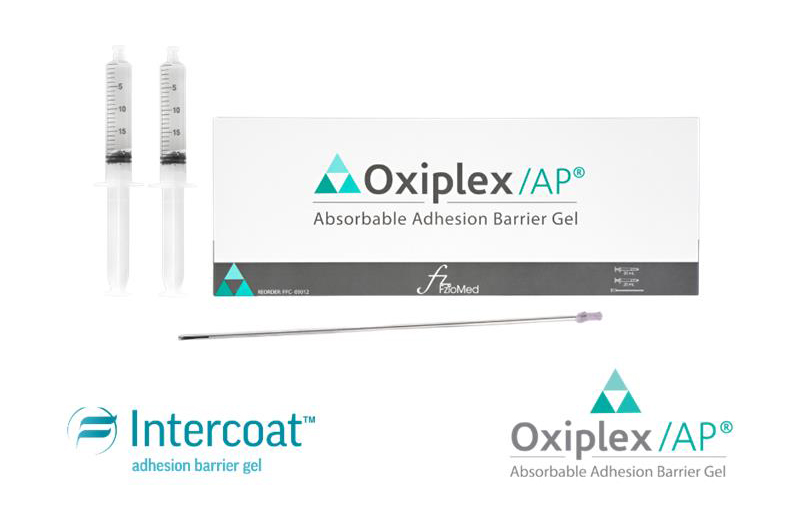
An effective adhesion barrier for intrauterine or peritoneal surgery, Oxiplex/AP® Absorbable Adhesion Barrier Gel helps reduce the incidence, extent, and severity of postoperative adhesions.
An Absorbable Gel for Adhesion Prevention 1,2,3,4,5
Oxiplex/AP is a clear, single-use, flowable gel. It is intended to serve as a temporary, absorbable mechanical barrier separating surgically traumatized opposing tissue surfaces in the peritoneal cavity, where adhesions could potentially form.
Oxiplex/AP is a unique formulation of the company’s proprietary biomaterial. It is supplied ready-to-use in 2, 20 mL syringes with a sterile applicator.
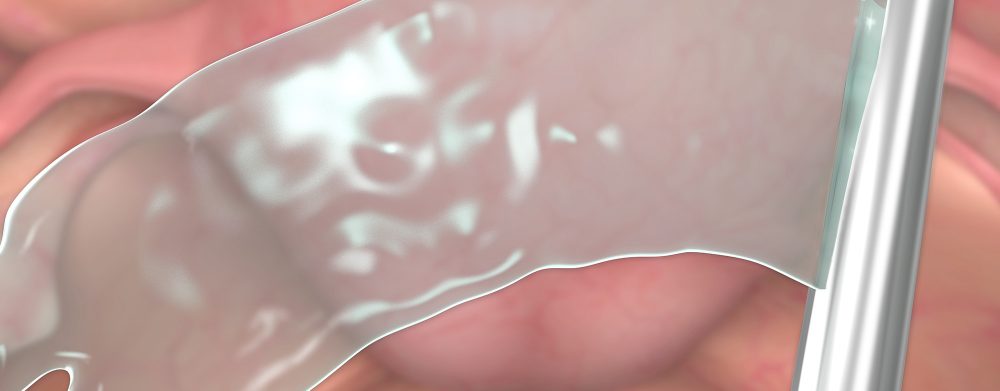
What Are Peritoneal Adhesions?
Trauma to the peritoneum during abdominal surgery can result in fibrous bands connecting surfaces that are normally separate. The peritoneum is a membrane that lines the abdominal cavity and covers most of the abdominal organs. Adhesions occur despite the best surgical techniques, but there are strategies that can reduce adhesions. These include using mechanical barriers to separate traumatized tissues during the healing period.
Clinical Consequences of Peritoneal Adhesions
Adhesions are the most frequent postoperative complication of open and laparoscopic surgery. Most women develop adhesions after major gynecological surgery and some will develop clinical consequences such as bowel obstruction, infertility, chronic pelvic pain, and intraoperative complications 6,7,8,9.
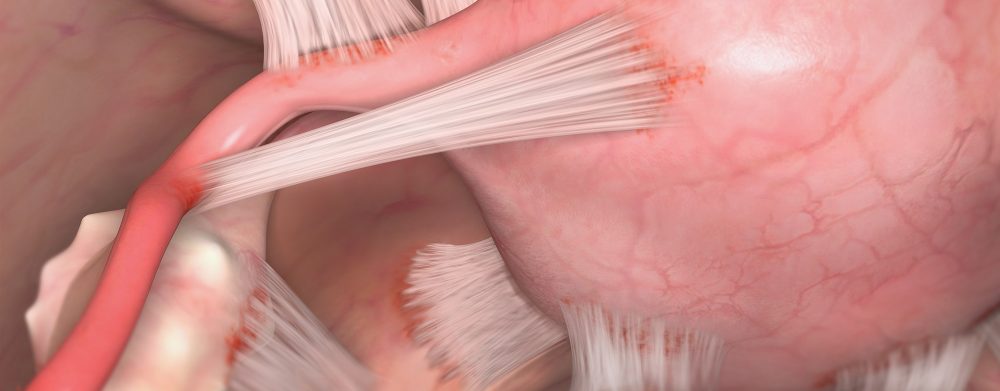
Uterus and pelvic wall with adhesions
Advantages
The advantages of using Oxiplex/AP Adhesion Barrier Gel in peritoneal surgery include:
Benefits
- Exceptional safety
- Indicated for use in intrauterine and peritoneal surgery
- Ready to use
- Fast application, thorough coverage
- Colorless
- Absorbable
Protects the Procedure
- Separates and coats tissues
- Reduces adhesions
Optimizes Healing
- Moderates pain and symptoms
- Re-operations can be complicated by adhesions at original operative site
Improves Outcomes
- Superior American Fertility Society adnexal score with Oxiplex/AP vs. Control in 2 studies
How it Works
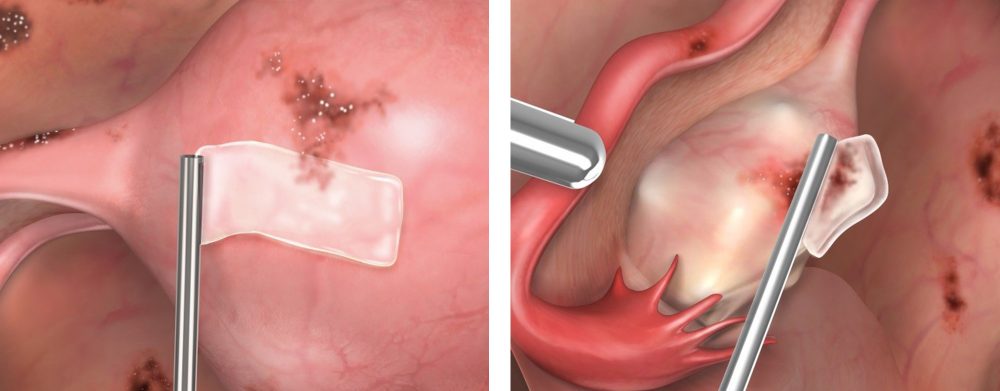
Left image: Oxiplex/AP application to the uterus.
Right image: Oxiplex/AP application to an ovary.
Adhesion barriers are a proven method of enhancing good surgical technique by reducing post-surgical adhesions. Oxiplex/AP is designed to coat tissues traumatized during procedures such as:
- Adhesiolysis
- Ovarian surgery
- Tubal surgery
- Myomectomy
- Treatment of endometriosis
- Hysterectomy
Applying Oxiplex/AP during surgery is simple and takes only seconds. A single layer of targeted protection of traumatized tissue creates a temporary barrier during healing. Following surgery, the body absorbs the gel and it does not prevent normal healing.
Indication
Oxiplex/AP is intended to be used as an adjunct to intrauterine or peritoneal surgery for reducing the incidence, extent, and severity of postoperative adhesions at the surgical site.
Clinical Experience
Please refer to the Reference Library for additional clinical resources.
Oxiplex/AP Is Proven Effective
Consistent superiority in results as demonstrated by the American Fertility Society (AFS) adnexal score comparing patients with Oxiplex/AP vs. Control in 2 separate studies.
- Prospective, randomized, third-party blinded, parallel group multicenter studies
- Laparoscopic gynecological surgery with second look laparoscopy 6-10 weeks later
- American Fertility Society (AFS adhesion scores) quantified by blinded videotape review
Combined Data from Lundorff et al.3 and Young et al.10
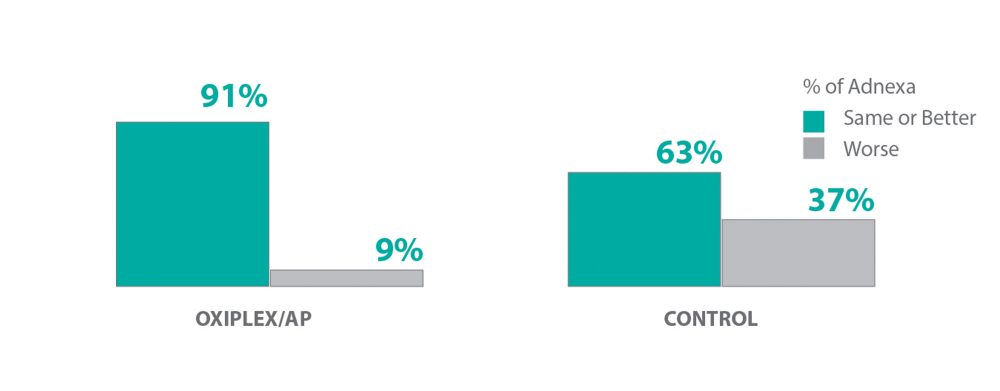
Additional Study Data 11,12
Di Spiezio Sardo et al used Oxiplex/AP following hysteroscopic surgery in a randomized study of 110 patients.
- Follow-up at one month showed that patients treated with Oxiplex/AP had fewer de novo adhesions (6% vs 22%) compared to control.
- Patients treated with Oxiplex/AP also demonstrated improvement in the degree of patency of the internal uterine osteum. Fuchs et al. used Oxiplex/AP following hysteroscopic surgery in a randomized study of 52 women.
- Follow up at 20 months showed that patients treated with Oxiplex/AP had fewer moderate-to-severe intrauterine adhesions (4% vs. 16%) compared to control.
- Patients treated with Oxiplex/AP had an improved fertility rate (27% vs 14%) compared to controls.
DiSpiezio Sardo et al used Oxiplex/AP following hysteroscopic metroplasty to expand dysmorphic uteri in a prospective, observational study in 30 infertile women.
- Oxiplex/AP gel was applied into the uterine cavity at the completion of the procedure through the inflow channel of the hysteroscope.
- At the mean follow-up of 15 months, clinical pregnancy rate was 57% and term delivery rate was 65%.
- Low incidence of post surgical synechiae attributed to the use of Oxiplex/AP gel.
Instructions for Use
Click here to request the most recent revision of this product’s instructions for use. Please state the product name for the IFU requested in the comments section.
Availability
FzioMed offers innovative adhesion barrier products such as Oxiplex®, Oxiplex/SP® Gel, Interpose®, MediShield™, Oxiplex/AP®,and DYNAVISC®. These products are designed for use by medical professionals. Click here to contact FzioMed for more information on product availability in your country.
Last Updated: March 5, 2024
